Michelangelo and da Vinci were true Renaissance Men; skilled sculptors, painters, architects, and engineers. However, their great works did not come into existence purely by the waving of hands. They, like every man before them, stretching back to the creation of fire and the wheel, relied on tools to bring their vision to reality. It is in that spirit that we move on to discuss the implements of creation, the tools of the trade.
Crack open your toolbox and get a hardware store on speed dial. I am… THE HOBBYIST.
With any given project, I use somewhere in the neighborhood of six to twelve different tools. Inevitably, as the project’s demands change, so do my tools. As a matter of philosophy, I prefer to generalize rather than specialize whenever possible. A knife is a knife; do I need really five knives for different tasks when one will do fine?
As Jack Nicholson once famously said in Tim Burton’s Batman, “Where does he get all those toys?” The truth is that I buy very little in the way of tools from the hobby shop. With rare exceptions, pretty much everything can be purchased at a hardware store instead, where it’s better quality and usually cheaper to boot. My personal favorite is Harbor Freight Tools, which is just a godsend for someone like me. Luckily for me, there happens to be a Harbor Freight around the corner from my favorite hobbyshop (Hobby Town USA, in case you’re wondering). So, whenever I start a new project, I’ll usually stop in and pay them a visit to see if there’s anything I need.
So, let’s take a look at my toolbox.
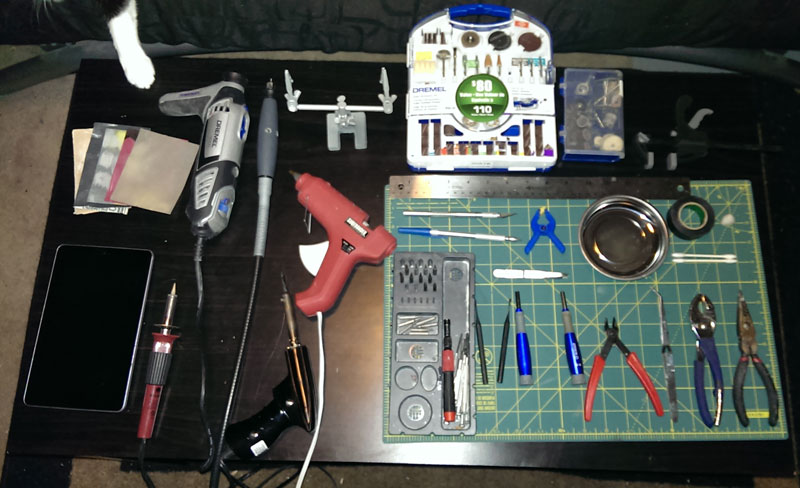 Admittedly, I won’t use all of those in every project, but they’re all useful in certain situations. So, let’s do a rundown of each tool.
Admittedly, I won’t use all of those in every project, but they’re all useful in certain situations. So, let’s do a rundown of each tool.
First up, my trusty Nexus 7. Whenever I need to look up a reference image real quick, this thing is a godsend. Also good for dealing with other stuff without having to pull out my phone, and watching Netflix while I work.
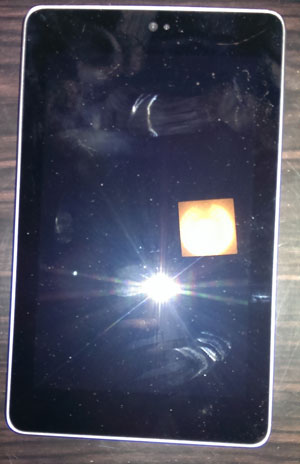 Here’s part of my sandpaper collection. I have everything from gravel on a sheet to automotive grade 1000+ grit.
Here’s part of my sandpaper collection. I have everything from gravel on a sheet to automotive grade 1000+ grit.
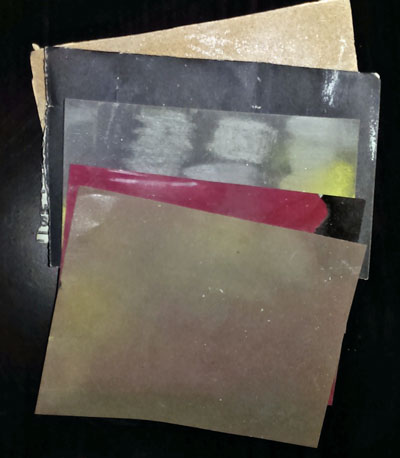 This is my trusty Dremel multitool. It’s awesome. The thing next to it is an attachment used for detail work, which for me is basically everything I do. If you don’t have one, you should get one. You’ll literally FIND things to do with it.
This is my trusty Dremel multitool. It’s awesome. The thing next to it is an attachment used for detail work, which for me is basically everything I do. If you don’t have one, you should get one. You’ll literally FIND things to do with it.
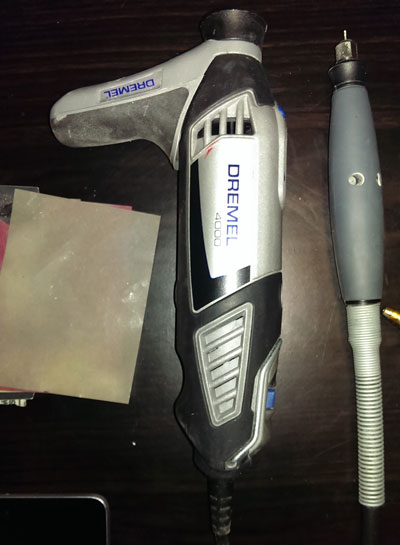 This is a wood-burning tool. Seeing as I don’t do wood burning, it would seem to be an odd inclusion. That’s before you consider that the ability to deliver a lot of heat (for example, enough to melt plastic) to a very small area might be useful.
This is a wood-burning tool. Seeing as I don’t do wood burning, it would seem to be an odd inclusion. That’s before you consider that the ability to deliver a lot of heat (for example, enough to melt plastic) to a very small area might be useful.
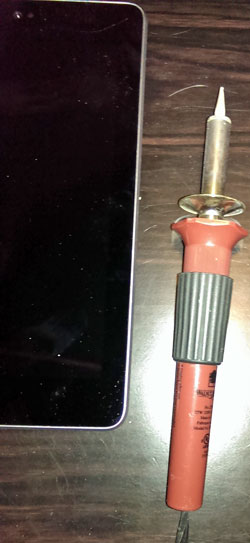 This is my soldering gun. I prefer the pistol grip versus the traditional pencil grip. Nothing fancy, and it gets the job done for when I have to mess with electronics.
This is my soldering gun. I prefer the pistol grip versus the traditional pencil grip. Nothing fancy, and it gets the job done for when I have to mess with electronics.
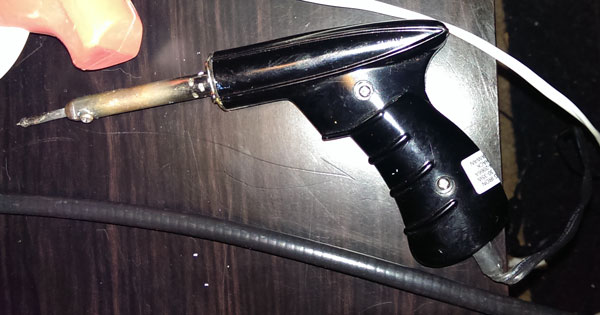 This one is a hobbyist staple: the hot glue gun. It’s a smaller version with High and Low settings.
This one is a hobbyist staple: the hot glue gun. It’s a smaller version with High and Low settings.
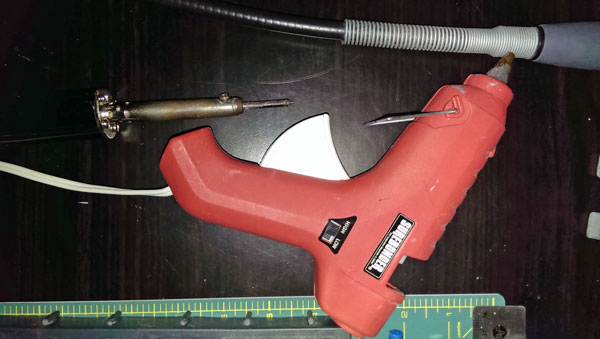 These are called helping hands. I literally have ten pairs of these. Just two alligator clips on a bar. This is one of the few tools I use on literally EVERY project. Pro tip: get these from Harbor Freight; the hobby store sells them for ten bucks a pop, Harbor Freight sells them for $3.
These are called helping hands. I literally have ten pairs of these. Just two alligator clips on a bar. This is one of the few tools I use on literally EVERY project. Pro tip: get these from Harbor Freight; the hobby store sells them for ten bucks a pop, Harbor Freight sells them for $3.
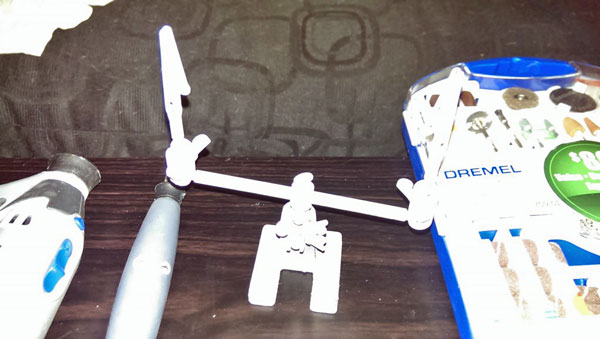 This is my screwdriver collection. Well, part of it, anyway. If there’s a screw, I can probably unscrew it.
This is my screwdriver collection. Well, part of it, anyway. If there’s a screw, I can probably unscrew it.
 These are pin punches. Useful for pushing out anything pin-like.
These are pin punches. Useful for pushing out anything pin-like.
 Another pair of screwdrivers. Hex, Philip, and Flathead. The bits are stored in the body of the screwdriver, which makes for easier storage. Perfect for electronics.
Another pair of screwdrivers. Hex, Philip, and Flathead. The bits are stored in the body of the screwdriver, which makes for easier storage. Perfect for electronics.
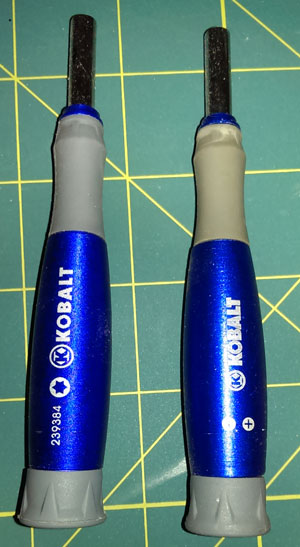 Here’s a two for one. The top item is the classic XActo knife. That knife has seen some shit, and keeps on cutting. The second item is called a panel scriber; it’s designed to carve small lines into plastic to simulate armor panels. Repeated scribings deepen the panel lines until they’re at an acceptable depth.
Here’s a two for one. The top item is the classic XActo knife. That knife has seen some shit, and keeps on cutting. The second item is called a panel scriber; it’s designed to carve small lines into plastic to simulate armor panels. Repeated scribings deepen the panel lines until they’re at an acceptable depth.
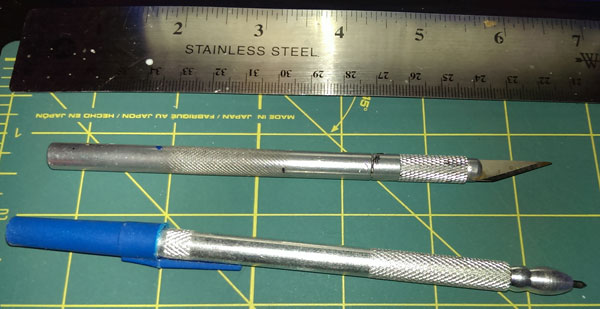 These are tweezers. Pretty self explanatory, good for picking up and holding small objects.
These are tweezers. Pretty self explanatory, good for picking up and holding small objects.
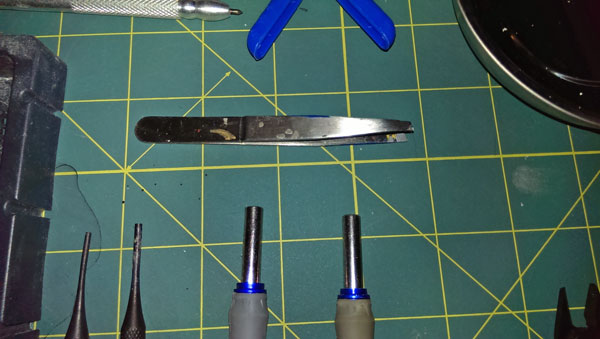 Here’s a tool you’re probably not familiar with. It’s called a Micro Flush Cutter. One side of the cutting blades is flat, so when it cuts something it’ll be flat, rather than come to a point. Very useful for removing plastic model parts from a parts tree.
Here’s a tool you’re probably not familiar with. It’s called a Micro Flush Cutter. One side of the cutting blades is flat, so when it cuts something it’ll be flat, rather than come to a point. Very useful for removing plastic model parts from a parts tree.
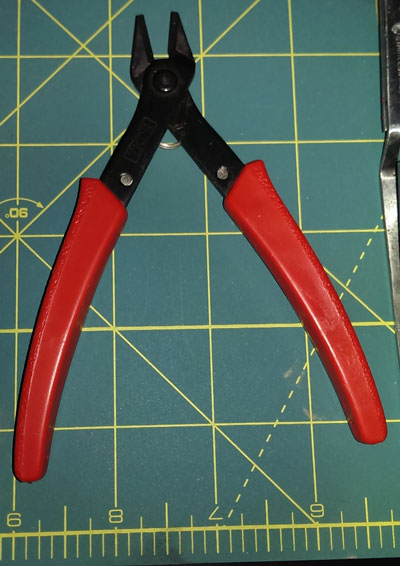 This is one of my many micro-clamps. Not terribly strong, but strong enough to hold two things together while the glue I inevitably put on them dries.
This is one of my many micro-clamps. Not terribly strong, but strong enough to hold two things together while the glue I inevitably put on them dries.
 This is my bit collection for the Dremel. I haven’t used all of them yet, but I’ve used most of them.
This is my bit collection for the Dremel. I haven’t used all of them yet, but I’ve used most of them.
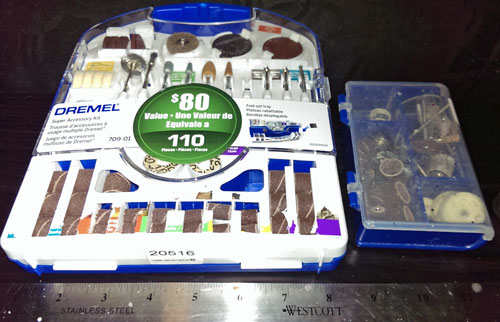 This is a bunch of tools, but really you should just be looking at the ruler. Metal, none of that wood shit.
This is a bunch of tools, but really you should just be looking at the ruler. Metal, none of that wood shit.
 A vise, for when the microclamps aren’t big enough.
A vise, for when the microclamps aren’t big enough.
 This is a pair of forceps. I absolutely LOVE these things. They’re amazing. I actually use them more than tweezers; because of the design, they stay closed, reducing hand fatigue.
This is a pair of forceps. I absolutely LOVE these things. They’re amazing. I actually use them more than tweezers; because of the design, they stay closed, reducing hand fatigue.
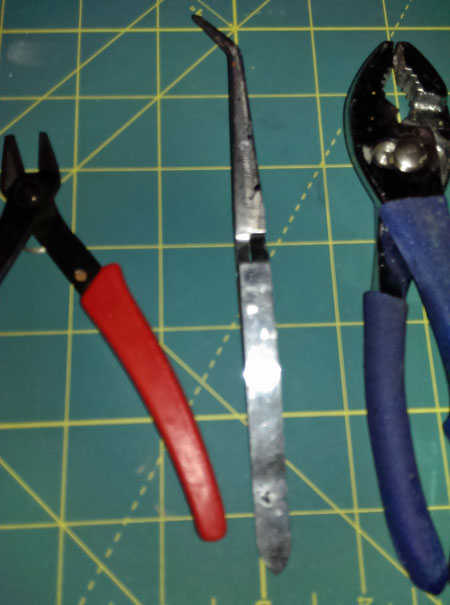 My two main pliers, crescent and needlenose. I have probably four or five more pairs in different sizes, but these are my two big ones.
My two main pliers, crescent and needlenose. I have probably four or five more pairs in different sizes, but these are my two big ones.
 Here’s another item you probably haven’t seen before: a magnetic dish. It’s an amazing multipurpose tool; it keeps small items together and it keeps metallic items in one place (like very small screws). Super convenient, and super cheap (about $5).
Here’s another item you probably haven’t seen before: a magnetic dish. It’s an amazing multipurpose tool; it keeps small items together and it keeps metallic items in one place (like very small screws). Super convenient, and super cheap (about $5).
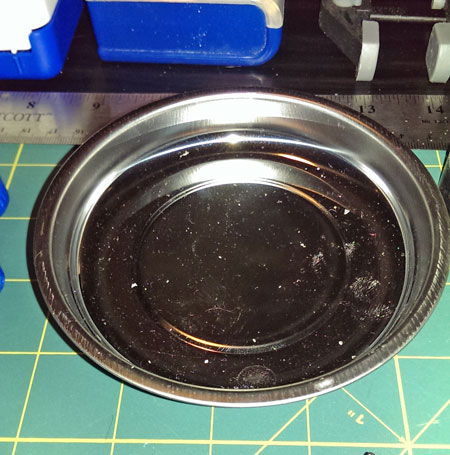 Finally, a three for one. First up is electrical tape. Useful for when I’m doing any kind of soldering to keep stuff from shorting out. Next to it is plain white Sticky Tac. Same stuff we all played with in school, but this time actually used for what it was kind of intended for. Belong that are Precision Q-Tips. See, regular Q-Tips get big and fluffy when you expose them to liquids. These are smaller and more tightly wound, so they hold their shape better. Excellent for precision work, such as applying waterslide decals or cleaning up spilled paint.
Finally, a three for one. First up is electrical tape. Useful for when I’m doing any kind of soldering to keep stuff from shorting out. Next to it is plain white Sticky Tac. Same stuff we all played with in school, but this time actually used for what it was kind of intended for. Belong that are Precision Q-Tips. See, regular Q-Tips get big and fluffy when you expose them to liquids. These are smaller and more tightly wound, so they hold their shape better. Excellent for precision work, such as applying waterslide decals or cleaning up spilled paint.
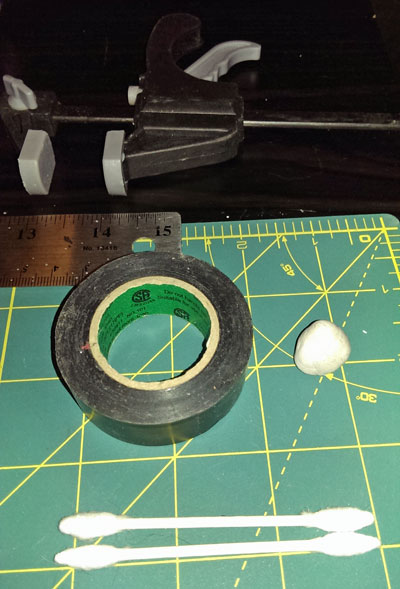 So there you have it. Hopefully you found something interesting.
So there you have it. Hopefully you found something interesting.
Next time, on The Hobbyist… PAINT!